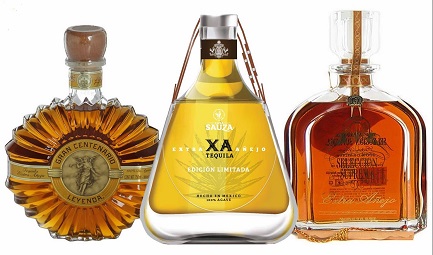All you need to know about tequila

Tequila is world famous drink now that was first manufactured in the Mexican city of Tequila, state of Jalisco. Tequila is produced by fermentation and distillation of the blue agave juice in five states of Mexico: in 7 municipalities of Guanajuato, 30 of Michoacan, 8 of Nayarit (in the areas, which are close to the state of Jalisco), in 11 municipalities of Tamaulipas and, of course, throughout the state of Jalisco.

To be called tequila the drink has to be produced in Mexico and contain at least 51% of the Agave sugars, although the most pure tequilas contain 100% (which is indicated on the label of the item as "100% agave»). In mixed tequilas the agave is combined with the syrup of corn or sugar cane.
Today, there are several kinds of tequila. In accordance with the amount of Agave sugars the beverage can be "100% agave» and regular tequila («Tequila»). Depending on characteristics acquired after distillation, one of the following classes is assigned to tequila:
- A white or silver («Blanco» or «Plata»): the transparent product obtained by distillation, it is permissible to dilute it with distilled water to achieve the desired degree;
- Young or gold («Joven» or «Oro»): a product that is produced by mixing of white tequila with a one of class «Reposado Añejo» and / or «Extra añejo». To mitigate such tequila flavor it is possible to add oak extract, glycerol and sugar syrup;
- Seasoned («Reposado»): tequila, matured in oak barrels for at least two months and, if necessary, diluted with distilled water to achieve a normal alcoholic degree. The beverage, obtained by mixing of tequila «Reposado» and tequilas «Añejo» or «Extra añejo», also has a class «Reposado»;
- Seasoned «Añejo»: a beverage, which run the aging process for about at least one year in oak receptacles of not more than 600 liters of capacity;
- Seasoned «Extra añejo»: tequila, the maturing period of which is at least three years, but it`s not indicated on the label. It is also matured in oak containers of not more than 600 liters of capacity.
In the international market is often used an English version of the classification: «Silver» instead of «Blanco», «Gold» instead of «Joven» or «Oro», «Aged» instead of «Reposado», «Extra aged» instead of «Añejo» and «Ultra aged» instead of «Extra Añejo».
It is believed that tequila acquires the best quality after at least 4-5 years of aging. This technology allows manufacturers to obtain not just a grade, but their own brand of tequila too, depending on many nuances, from the age of barrels, their impregnation and finishing a certain period of maturing. The mixing of tequilas of one type, but from different barrels, lets to get the beverages with a unique combination of taste and aroma.
The most popular brands of tequila in Mexico are «Don Julio», «El Tesoro», «Herradura», «José Cuervo», «1800», «Centenario», «Azul», «Rey Sol», «Patrón». Each of the manufacturers periodically produces a beverage of the series «Gran Reserva» or «Reserva de Familia», which is a true delight for gourmets. Good tequila in Mexico costs from 200 pesos per bottle, and some specimens may reach a value of up to 2,000 pesos.



For many years a culture of consumption of the beverage has appeared in Mexico. The seasoned tequila is drunk with small sips, which are held between the lips and the tip of the tongue for a few seconds to taste better. The white and gold tequila is usually used for the preparation of cocktails, although some especially good ones are drunk as an independent beverage. To serve tequila the special ponies are used – narrow and tall «caballitos»; it is often served with salt and lemon, as well as with nonalcoholic drink "sangrita" (prepared of orange and lemon juice with chili and salt).


January 6 the Catholic Church celebrates the Epiphany. This day is also dedicated to the memory of Three Kings (Magi) who brought gifts to baby Jesus at Christmas.

Annually with great trepidation Dominicans celebrate the Virgin of Mercy Day, the saint patroness of their country. Her name is associated with the religious order of Mercy established in 1218. And even though it was founded in Barcelona, Spain, and not on Dominican land, which at that time was not a colony of Spain, the followers of the Order, one of the first clergymen who came to the Dominican Republic during the second voyage of Christopher Columbus brought the image of the Virgin of Redemption.















